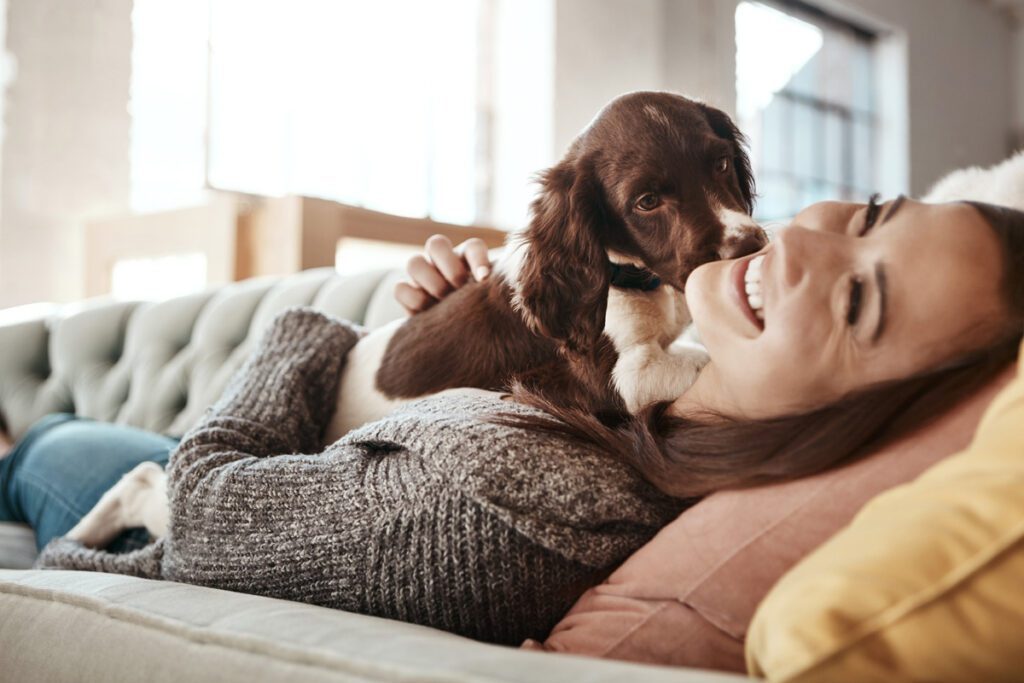How to ensure your new addition finds comfort.
It is an amazing feeling when you bring a new cat or dog into your home, but it’s important to ensure your new friend is also comfortable with you and the new surroundings. Some animals may have endured abusive or neglectful backgrounds before being adopted, so they may need a little more time getting used to a new owner, other pets in the home and navigating new surroundings such as stairs (if they have never used them before) and a backyard or litter box location.
“When we talk about socialization for pets, we mean exposure in a positive way,” says Amy Campbell, certified professional dog trainer and co-owner of Behave Atlanta that services several neighborhoods in town, including Buckhead.
Doggie Dos
Campbell suggests being mindful of how your new dog reacts to things in or outside a new home, and if they seem fearful, take it slow and add positivity when you can. Teach them that sounds such as sinks and TVs aren’t scary and that their dog crate is a fun, safe place to be. “For most dogs, this is easiest delivered in the form of treats, but it might also be a happy voice, more space from the upsetting element or playtime,” she says.
Kitty Cues
When you bring home a new cat, Ingrid Johnson, certified cat behavior consultant and owner of Fundamentally Feline, suggests giving them their own “safe” and confined space. Once they are eating, drinking and eliminating normally, allow them controlled access to other areas. “It is ideal to utilize play, food and praise to do this,” she says. “Cats learn better if they gradually explore new spaces themselves versus being picked up and forced to go to a different area of the house.”
Johnson says the socialization window ends between nine and 12 weeks old, and the best piece of advice she can offer to ensure a socially normal kitten is to adopt two.
“Cats need other cats to learn from, and no human or other pet can teach them appropriate play, bite inhibition, etc. Single cats, raised alone without their own species, tend to have behavior problems like fear and aggression.”
Pet Bonding
Once your pet is more comfortable with you and their surroundings, it’s time to think about a more permanent relationship. Staying close to a routine with daily play, walks (for dogs) and meals is important. Johnson says training is great for developing a language with which you can communicate with your pet, and it plays a huge role in bonding. Plus, if you’re struggling to socialize or bond with your dog or cat, professional training can help both pet and owner.
BEHAVE ATLANTA
404.981.2642
behaveatlanta.com
@behaveatlanta
FUNDAMENTALLY FELINE
fundamentallyfeline.com
@fundamentallyfeline
STORY: Chelsie Butler
Simply Buckhead is an upscale lifestyle magazine focused on the best and brightest individuals, businesses and events in Buckhead, Brookhaven, Sandy Springs, Dunwoody and Chamblee. With a commitment to journalistic excellence, the magazine serves as the authority on who to know, what to do and where to go in the community, and its surroundings.


















